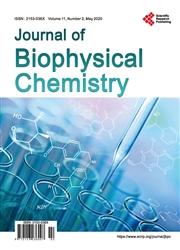The influence of chromium ions on the growth of the calcium hydroxyapatite crystal
引用次数: 5
Abstract
Hydroxyapatite (Ca10(PO4)6(OH)2) is widely used as bio-ceramic materials and as adsorbents for separation of bio-molecules. These materials have also been used as adsorbents for heavy metals, supports and as catalysts in oxidation and dehydrogenation reactions. The catalytic performance of these materials depend on the lattice substitution of Ca sites in Hydroxyapatite structure by varied cations as Na, Mg, Sr and Mn, which result in changes in various structural pro perties as crystallinity and morphology. Pure calcium hydroxyapatite (S1) and Cr loaded hydroxyl apatite (S2, S3, S4 and S5) of different chromium concentrations have been prepared by wet precipitated method. An in-vitro examination is essential to investigate the mechanism of the deficient HA and tissue interface reaction by preparing SBF (Simulated Body Fluid) through the elemental and chemical analysis of Ca, P and Cr. FTIR used to analyze the samples after incubation in SBF for 24 day. PH of the samples also was measured at the first period of immersion time. At high loading of chromium ions, the formation of carbonate apatite decrease. The concentrations of the chromium in the Cr_HA crystal during the soaking in SBF are very safe dose for human.铬离子对羟基磷灰石钙晶体生长的影响
羟基磷灰石(Ca10(PO4)6(OH)2)被广泛用作生物陶瓷材料和生物分子分离的吸附剂。这些材料也被用作重金属的吸附剂、载体和氧化和脱氢反应的催化剂。这些材料的催化性能取决于不同阳离子如Na、Mg、Sr和Mn对羟基磷灰石结构中Ca位点的晶格取代,从而导致结晶度和形貌等各种结构性能的变化。采用湿沉淀法制备了不同铬浓度的纯钙羟基磷灰石(S1)和载Cr羟基磷灰石(S2、S3、S4和S5)。通过Ca, P和Cr的元素和化学分析,制备SBF(模拟体液)来研究HA缺乏和组织界面反应的机制是必要的。在SBF中孵育24天后,使用FTIR分析样品。在第一次浸泡时,测定了样品的PH值。在高铬离子负荷下,碳酸盐磷灰石的形成减少。在SBF浸泡过程中,结晶中铬的浓度是人体非常安全的剂量。
本文章由计算机程序翻译,如有差异,请以英文原文为准。
求助全文
约1分钟内获得全文
求助全文

 求助内容:
求助内容: 应助结果提醒方式:
应助结果提醒方式:


